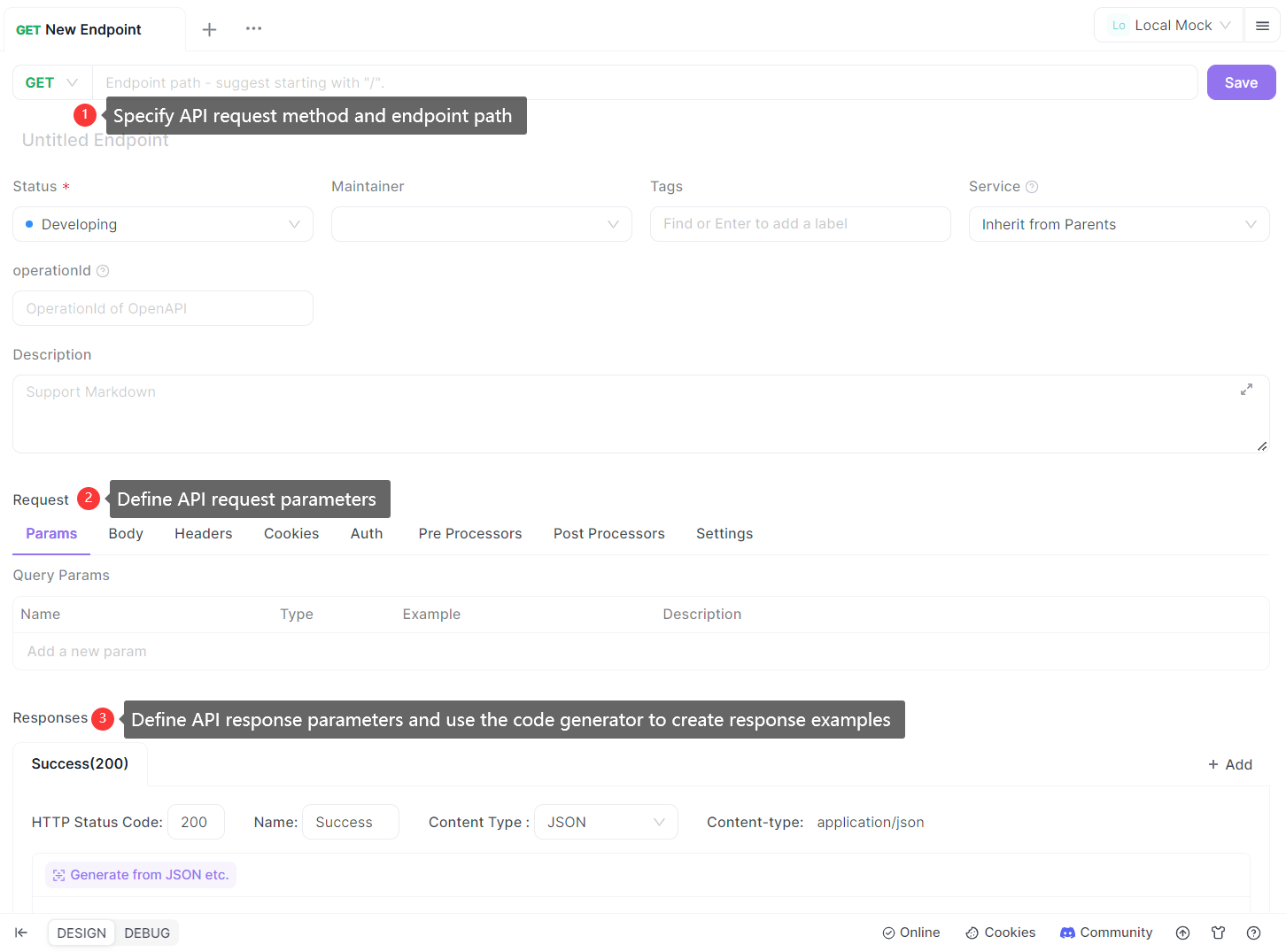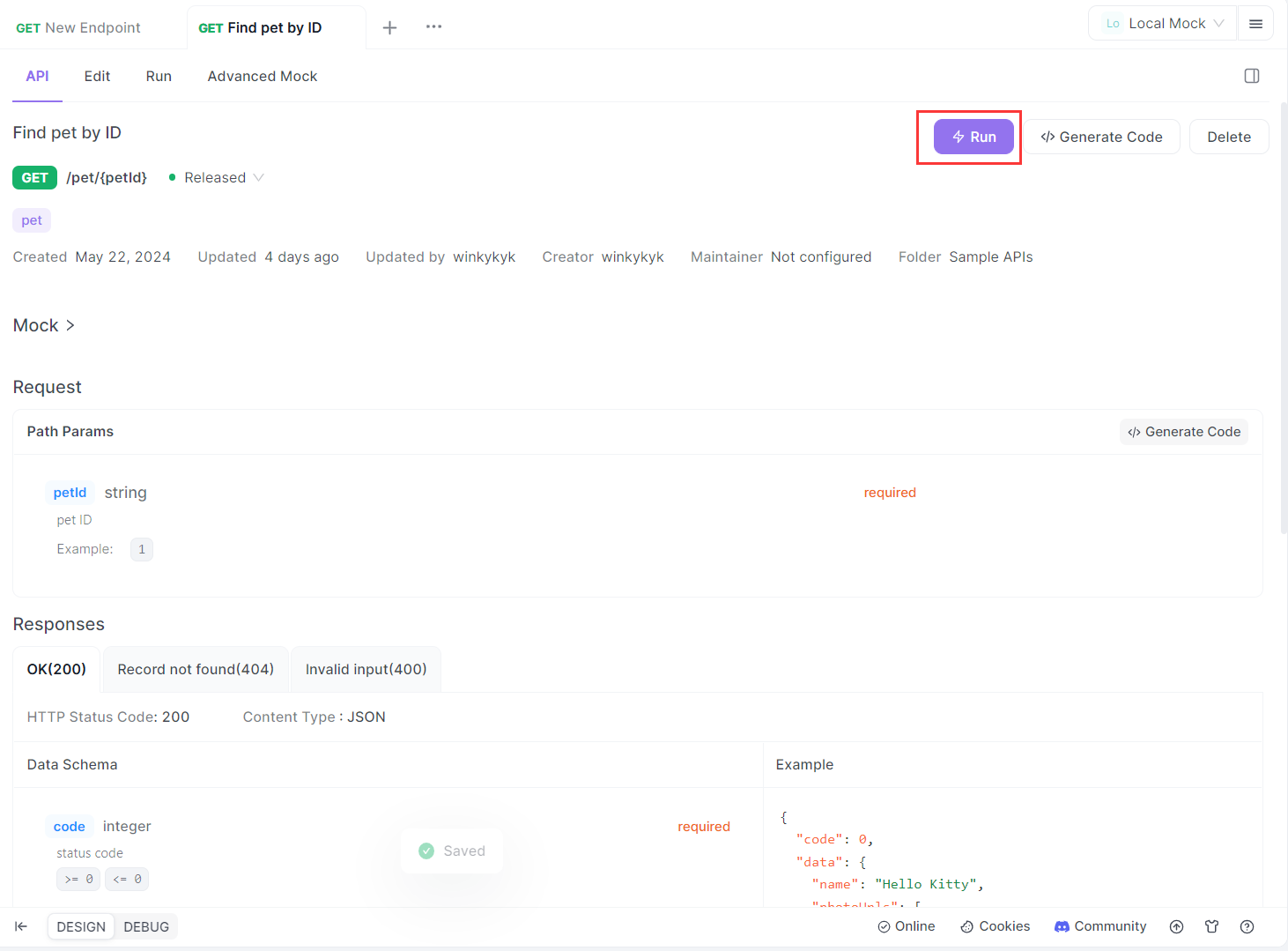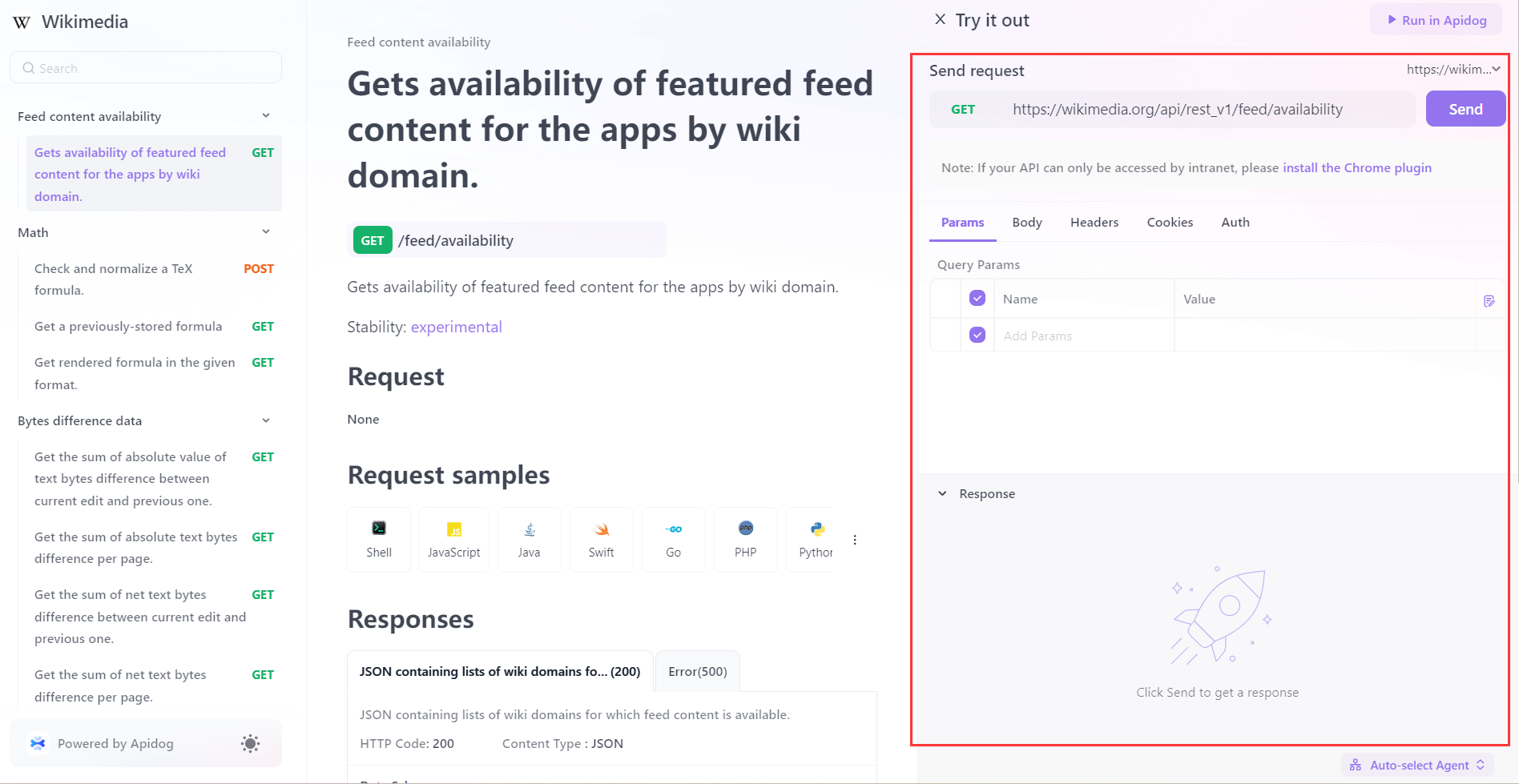API documentation is a cornerstone of modern software development, providing developers with the necessary details to effectively utilize and integrate APIs. It serves as the roadmap for developers, ensuring they can efficiently interact with and build upon existing APIs. This blog explores the concept, significance, best practices, and the most advanced tool for creating stellar API documentation.
What is API Documentation?
API documentation is a technical guide that explains how to effectively use and integrate with an API. It includes detailed information about the API's endpoints, methods, request parameters, response formats, authentication methods, error codes, and usage examples. Good API documentation provides developers with all the necessary information to understand and interact with the API.
Key Elements of API Documentation
- Endpoint Definitions: Detailed information on each API endpoint, including URLs, HTTP methods, and required parameters.
- Authentication: Instructions on how to authenticate requests, including token generation and scope definitions.
- Request/Response Examples: Sample requests and responses to illustrate how the API works in practice.
- Error Handling: Descriptions of possible error codes and messages to help developers troubleshoot issues.
- Code Samples: Practical examples in various programming languages to demonstrate how to implement API calls.
Importance of API Documentation
Enhances Developer Experience
Clear and comprehensive documentation reduces the learning curve for developers, enabling them to integrate APIs quickly and efficiently. It acts as a self-service guide, minimizing the need for support and accelerating development.
Helps New Developer Onboarding
Comprehensive API documentation helps new developers quickly understand and start using an API. It reduces the learning curve and accelerates the development process.
Facilitates Collaboration
API documentation serves as a common reference point for development teams, fostering collaboration. It ensures all team members have a consistent understanding of how the API works, which is crucial for coordinated development efforts.
Boosts API Adoption
Well-documented APIs are more likely to be adopted by developers. Documentation that is easy to navigate and understand encourages more developers to use and recommend the API, expanding its reach and impact.
Reduces Support Costs
Good documentation reduces the need for extensive support, as developers can find answers to their questions directly in the documentation. This decreases the burden on support teams and minimizes downtime.
API Document Template
A basic API documentation template might include:
Introduction
- Overview of the API
- Use cases
Authentication
- Authentication methods
- API keys
Endpoints
- Endpoint URLs
- HTTP methods (GET, POST, PUT, DELETE)
- Request parameters
- Response formats
Error Codes
- List of error codes
- Descriptions and solutions
Rate Limits
- Information on rate limiting
- How to handle rate limit errors
Examples
- Request and response examples
- Code snippets in various programming languages
API Documentation Standards
OpenAPI Specification (OAS)
OpenAPI Specification is a standard for defining RESTful APIs. It provides a format for describing APIs in a way that is readable for both humans and machines.
RAML (RESTful API Modeling Language)
RAML is a standard for documenting RESTful APIs. It focuses on making API documentation easy to read and write.
API Blueprint
API Blueprint is a standard for designing and documenting APIs. It emphasizes simplicity and readability.
How to Write API Documentation?
Understand Your Audience
Before you start writing, understand who will be using your API and what their needs are. This helps in tailoring the documentation to meet the users' requirements.
Use Clear and Concise Language
Write in simple, straightforward language. Avoid jargon and complex sentences. The goal is to make the documentation easy to read and understand.
Provide Detailed Information
Include all necessary details about the API, such as endpoints, methods, request and response formats, authentication methods, error codes, and rate limits.
Include Examples
Provide code examples in various programming languages to help developers understand how to implement the API. Real-world examples are particularly useful.
Use Visuals
Incorporate diagrams, flowcharts, and screenshots where applicable. Visuals can make complex concepts easier to understand.
Keep it Updated
Regularly update the documentation to reflect any changes or new features in the API. Outdated documentation can lead to confusion and errors.
The API Documentation Dilemma: A Case Study
In the fast-paced world of software development, ensuring that API documentation is both accurate and user-friendly is crucial. Recently, a technical team faced a significant challenge due to subpar API documentation.
The Incident
A backend developer shared an automatically generated Swagger UI API document(like the image below), which was riddled with issues:
- Complex Multi-level Models: Navigating through multiple levels was cumbersome.
- Difficulty in Finding APIs: The vast number of APIs made it hard to locate specific ones.
- JSON Formatting Issues: Submitting JSON parameters without formatting capabilities was problematic.
- Parameter Errors: Incorrect parameters were difficult to identify.
Lengthy Responses: Unfolded results were too long to read efficiently.

To hit the deadline, the frontend team quickly implemented the parameters and response data from the provided document in a rush. However, once the application went live, it crashed due to several API errors, such as missing parameters, incorrect parameter types, and nonexistent interfaces. This led to a heated argument between the frontend and backend teams.
The Root Causes
The CTO intervened and calmly analyzed the situation, identifying the main causes:
- Backend Sloppiness: Some API documentations were incorrectly written, and debugging was neglected.
- Time Constraints: The front-end developers didn't have enough time to fully test the APIs.
The CTO emphasized that these issues boiled down to a cost problem: the cost of inadequate tools and insufficient testing time. So the team is eager for an API documentation tool with the following capabilities:
- Debugging Functionality: Allowing the front-end developers to easily debug the API directly from the documentation.
- Code Generation: Reducing the need for manual code writing, improving efficiency and accuracy.
- Real-time Synchronization: Ensuring that the documentation always contains the latest code information.
The Team's Final Solution– the Most Advanced Free Tool
The team finally decided on Apidog, a comprehensive API development tool that integrates the functionalities of Postman, Swagger, Mock, and JMeter. Apidog empowers you to create online API documentation with the following capabilities:
- Online Debugging: Facilitating real-time API debugging.
- Code Generation: Automatically generating API requests and response codes.
- Cloud Mock: Creating virtual servers for unlimited, cost-free API requests during testing.

How to write API Documentation with Apidog?
What is Apidog?
Apidog is a versatile and free API development platform that simplifies every stage of the API lifecycle, from design and debugging to testing and mocking. Dedicated to a design-first approach, one of its standout features is the automatic API documentation generator. This feature allows users to effortlessly create comprehensive online documentation without extensive manual writing.

Step-by-step Guide to Creating API Documentation
To easily generate API documentation, simply follow these step-by-step guides:
Step 1: Sign up for Apidog
To start using Apidog for API documentation, create an account and log in. Upon logging in, you will be navigated to the Project Center, where you can select the default project or create a new one.

Step 2: Create a New API
Your API project will consist of multiple endpoints. Add an endpoint by clicking the "+" button or "Add Endpoint" within your project.

Step 3: Fill in API Information
Provide details like the endpoint URL, description, and request/response specifics. Documenting endpoints include:
- Specifying the HTTP method (GET, POST, PUT, DELETE, etc.) and API request path
- Defining request parameters (names, types, descriptions)
- Describing expected responses (status codes, formats, example responses)

Step 4: Save the API Documentation
After entering the necessary information, click on "Save" to save the API documentation.
Step5: Test API Directly from the Online API Document
Once you save the API documentation, there will be an option to "Run" your API. Clicking on the button "Run" will send an API request and fetch the response for you to test the endpoints. During this process, you can identify any errors and issues that need to be tackled.


Once the API documentation meets the business needs, you can share it with others via a single link.
Benefits of Generating Online API Documentation Using Apidog
- Online Debugging: Easily debug APIs directly within the documentation by clicking the "Run" button, enabling quick and efficient testing.

- Automatic Documentation Generation: Automatically generate comprehensive API documentation by filling in the necessary information, eliminating the need for extensive manual configuration.
- Code Generation: Instantly generate request and response model code in various languages, such as JavaScript, with options for Fetch, Axios, and JQuery, etc., simplifying the development process.

- Cloud Mock: Utilize Cloud Mock to simulate backend services and create virtual servers for testing without restrictions, enhancing flexibility and reducing dependency on actual backend services.

- Real-time Updates and Synchronization: Any changes made to the API documentation are instantly reflected in the documentation.
Best Practices for Writing API Documentation
Consistency
Ensure consistency in the terminology, formatting, and structure throughout the documentation.
Clarity
Be clear and precise in your explanations. Avoid ambiguity and ensure that every piece of information is easily understandable.
Comprehensive Coverage
Cover all aspects of the API, including edge cases and potential errors.
Interactive Documentation
Incorporate interactive elements such as Try-It-Out buttons and live code samples. Tools like Apidog provide interactive environments for testing API calls directly within the documentation.
Keep It Up-to-Date
Regularly update the documentation to reflect any changes in the API. Version control systems can help manage updates and ensure developers always access the latest information.
Include Tutorials and Guides
Supplement reference documentation with tutorials, guides, and how-to articles that provide step-by-step instructions for common use cases. This helps developers get started quickly and explore advanced features.
User-Friendly Design
Design the documentation to be user-friendly. Use a clean layout, intuitive navigation, and searchable content.
API Documentation Format
JSON
Many APIs use JSON format for their documentation, particularly for request and response examples.
YAML
YAML is often used in conjunction with OpenAPI Specification for defining API documentation. It's human-readable and easy to write.
Markdown
Markdown(Supported at Apidog as well) is commonly used for writing API documentation due to its simplicity and readability. It can be easily converted to HTML for web-based documentation.
Conclusion
Effective API documentation is fundamental to the successful adoption and utilization of any API. By providing clear, comprehensive, and up-to-date information, you empower developers to integrate your API quickly and efficiently, reducing support costs and fostering broader API adoption. Utilizing the right tools, adhering to best practices, and understanding your audience are crucial steps in creating stellar API documentation. Whether you are using tools like Apidog for automatic documentation generation or writing it manually, a well-documented API will serve as a valuable resource for developers and enhance the overall user experience.




